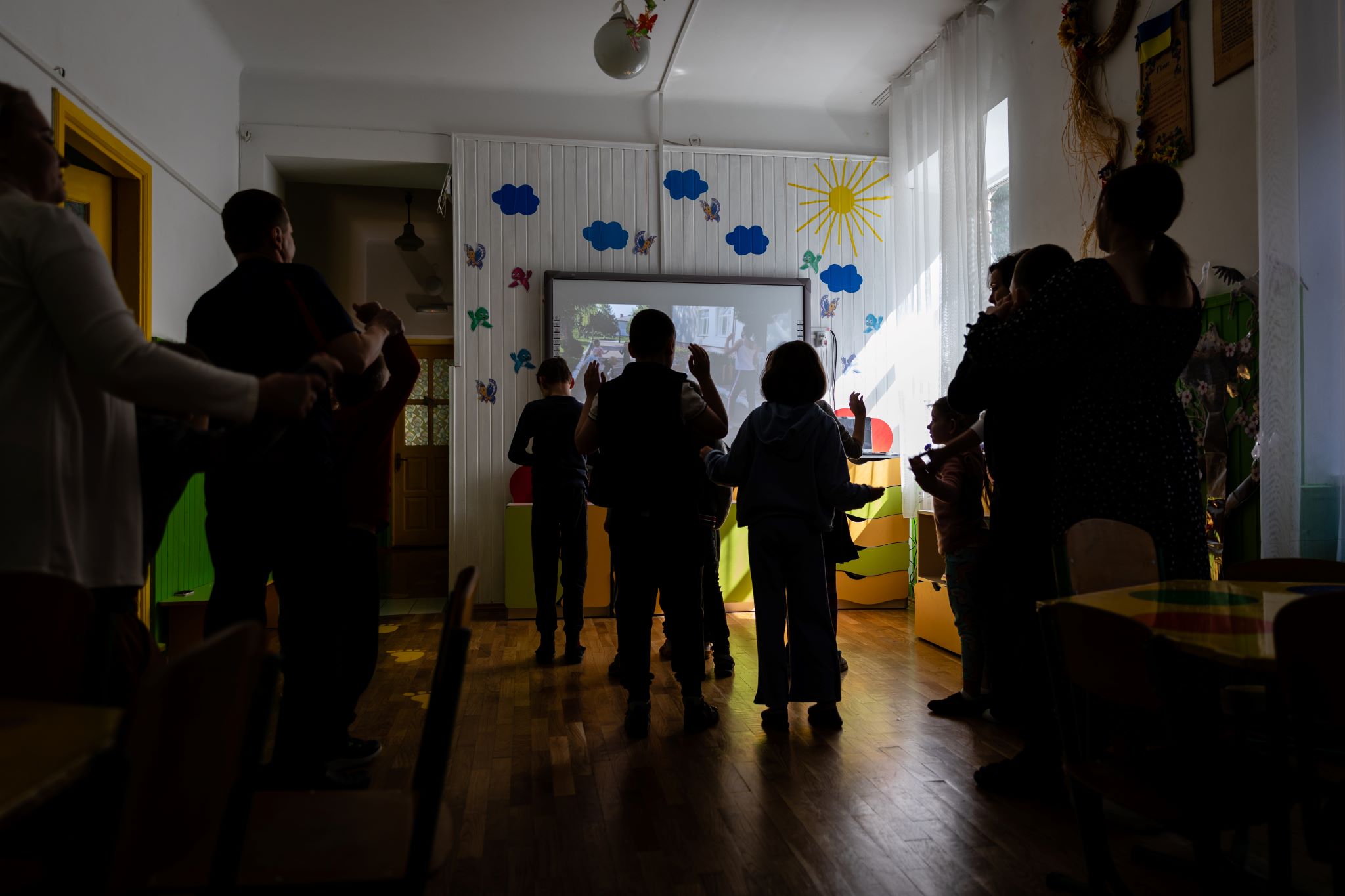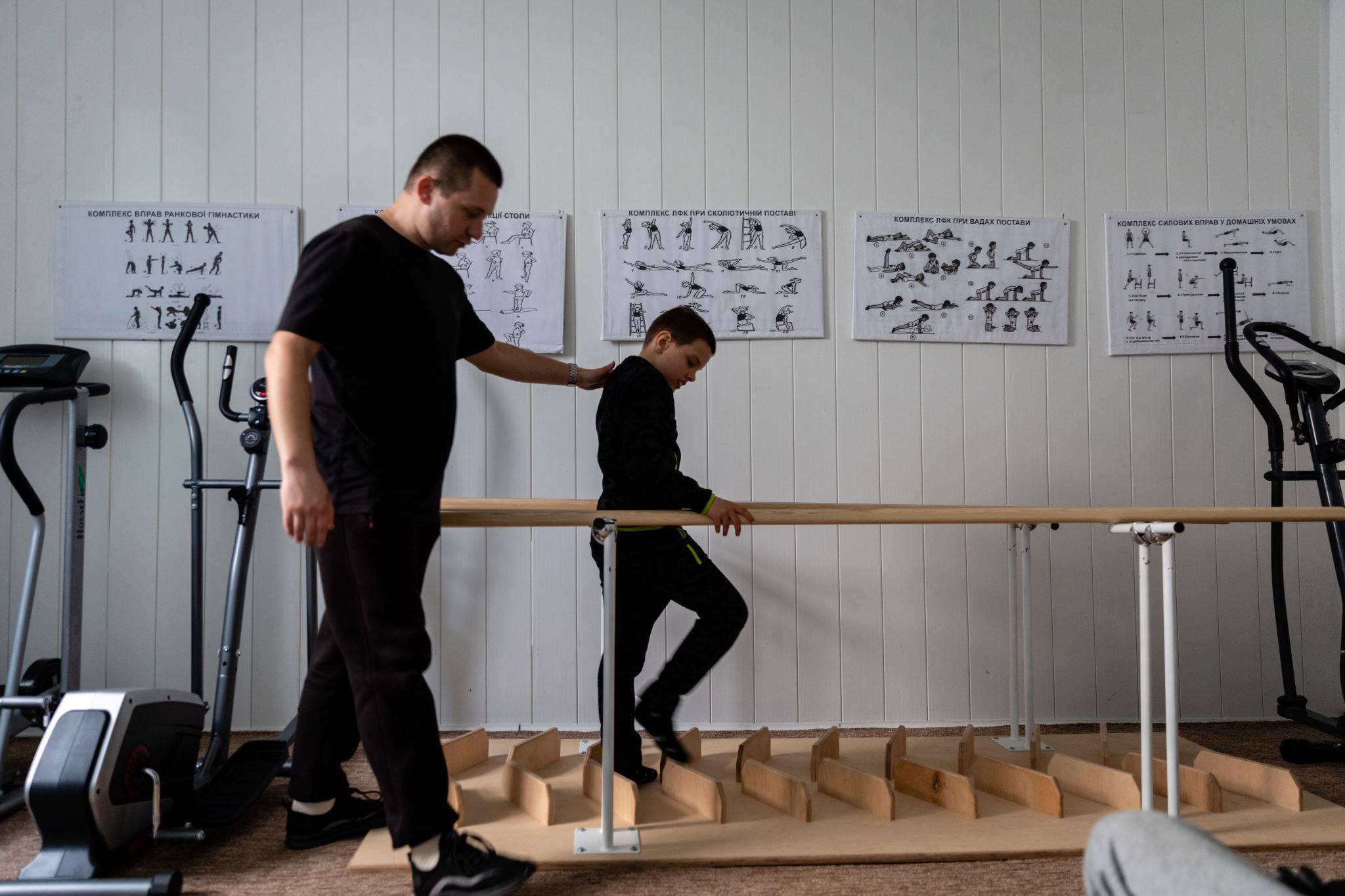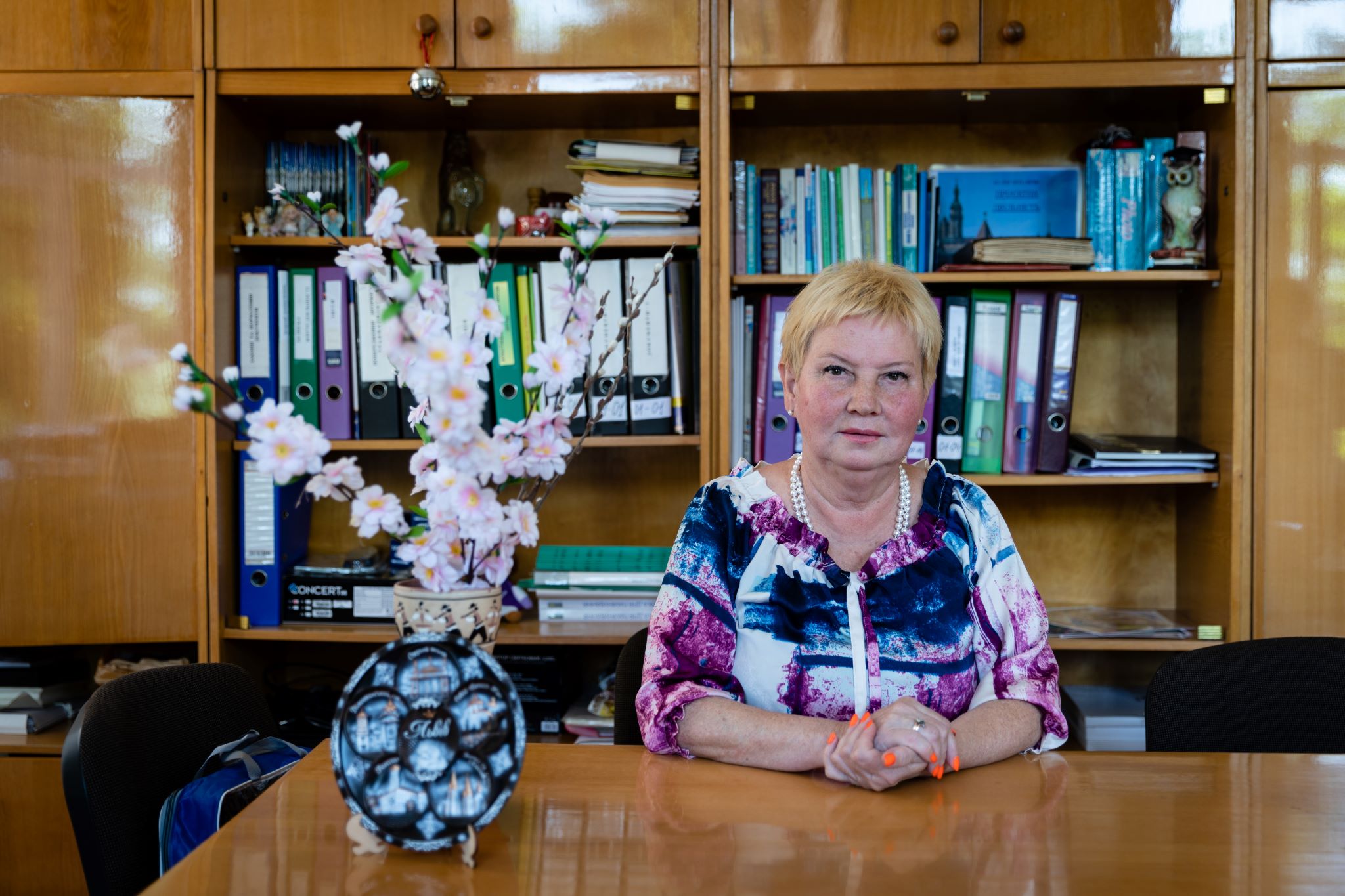Becoming adults
how they teach children with special educational needs at Mriya school during the war
There are 245 children at the Mriya educational rehabilitation center in Lviv. After the start of the full-scale invasion, the school became a temporary shelter for children from an orphanage evacuated from Donetsk region. And now the war keeps stressing them through regular air-raid alarms.
The school is one of the institutions providing care to children with disability that have received aid from Alliance of Public Health and Payoneer. In 2023, the Alliance together with the Ministry of Social Policy identified families and institutions that urgently needed support.
Read more to learn how children with special educational needs learn to become adults and adapt to wartime life.
Video classes: how to engage everyone
Morning sun shines on the paintings on the corridor walls — the works of local students. Silence — the kids are now in the classrooms — is suddenly broken by several short cries. A boy who struggles speaking tries to explain his concern. A teacher comes up, she asks to repeat, explains something, and comforts the boy. Soon both of them return to the class.
There are 245 children and 71 teachers at the Mriya educational rehabilitation center. Children with special educational needs study in small groups, not more than six students in each. Yet there are also those who need individual classes.
We can hear the children singing a song about a little turtle in one of the classes.
Six first-graders and their teacher doing stretching during a musical break. They follow the moves from the video on the interactive board: a teacher and her students are dancing in a school yard.
This is the group of children with autism spectrum disorders.

Interactive classes help children to both learn something new and improve physical coordination.
‘These exercises help the kids to better control their movement and improve motoric coordination’, says Halyna Pyrch, school principal. ‘For a few months we teach them only to sit at the desk and hold a pen or a spoon. Modern technology helps us: the kids look at the screen and follow the commands.’
There are five groups like this at the grade. In addition to the small group lessons, children have joint classes to communicate with more new people and improve socialization skills.
Anna Smirnova, deputy principal for correctional education tells us how modern technology helps teaching the children: ‘We select all the materials so that they are as comprehensible as possible for each category of the children. For example, children with autism spectrum disorders learn to read by taking a ‘snapshot’ of the picture with their eyes and remembering the whole word. While children with intellectual disorders learn to read starting with a sound and moving on to a syllable and then to a whole word. We show them their tasks on the multimedia board, but the videolessons are different. The technology combined with teacher’s imagination allows explaining the material considering how the child perceives it.’
Alliance of Public Health with the support from Payoneer helped the school to buy the necessary equipment for learning, rehabilitation, and leisure. It includes an interactive board with a projector, various exercise machines for the gym, and a sensory room and light table for sand animation. In total, 18 institutions providing education and rehabilitation to children with disability have received this aid.
The children can go to this big dark cave when they seek solitude
After the lessons children have correctional classes and various afterschool programs. They see psychologists, rehabilitation therapists, and speech therapists; or they may bake cakes, receive fairy tale therapy, sew clothes, and paint stained glasses and so on.
A space to move and a place to relax
‘Alina, move your head back! Keep your back straight! Vlad, well done! Volodia, continue.’ Physical therapist Oleh Kirhach holds a lesson for three students. He customizes exercises considering the age, physical condition and comorbidities of the children.
Alina from the tenth grade does an exercise on a machine to strengthen her leg muscles. This activity helps her to be fit.
Vladyslav has a deformed shin and ankle joint. The teacher leads the boy to the walking bars: he needs to walk the distance holding the bars and overcoming the barriers under his feet.

Physical therapy lesson. Oleh Kirhach is training his student
‘This exercise helps developing correct walking and spatial orientation’, explains Oleh Kirhach.
Volodia in the meantime trains his arms at the multifunctional weight machine. He develops stamina by activating different muscle groups.
‘All the children in the school capable of doing physical therapy do it’, says the teacher. ‘We also have a lot of cyclic machines for cardiotraining that help improving stamina and the condition of cardiovascular and pulmonary systems. We have an elliptical trainer, running machines, and cycling machines for rehabilitation of upper and lower body. To achieve tangible results, you need to follow two main principles: consistency and gradual approach. That is, you need to exercise on a regular basis and increase the load step by step.’
We leave the gym and move to one of the rooms the children love the best.
‘This space is used for emotional switch and relaxation,’ says Halyna Pyrch opening the door. ‘A child comes in feeling bad, but here they calm down. There are no classes here, this is a relaxation place.’
On the dark walls, there are painted branches shining in the UV light. In one of the corners, there are ball pit and trampoline, and in the other there is a light table for sand animation. Near the entrance, there is a dark sensory room — a tall tent with toys, ear muffs and blankets inside; they call it ‘cave’. A student can hide there if they feel the need to stay somewhere by themselves or think about something alone.
Anna Smirnova shows the relaxation room — a place for children to switch to a positive mood
‘The children draw on the sand whatever their imagination suggests, they listen to selected melodies, get into the ball pit or jump on the trampoline’, says Anna Smirnova. ‘Contact sensations are calming, and the cave helps them to gradually overcome the fear of confined spaces.’
Three short signals. What the war has changed
‘We became volunteers by accident.’ Anna Smirnova recalls the beginning of the full-scale invasion of Russia into Ukraine.
The Mriya center became a shelter for those who were escaping the areas of hostilities. Since the beginning of the invasion, the institution has admitted 85 children with mental disorders evacuated from the town of Mykolaivka in Donetsk region. They were taken care of by local teachers; volunteers would come and organize their leisure time. Later, the displaced children were evacuated to Spain, but Mriya students continue helping people.
‘We always take part in various charitable fairs, the children sell the sweets they bake, as well as some handmade items’, tells the principal Halyna Pyrch. ‘The money we donate to the needs of military men we know personally. The children feel involved, they know they do something good.’

School principal Halyna Pyrch says that the most important thing in their work is to prepare the children to adult life
Even though Lviv is far from the frontlines, the war keeps making itself felt through air-raid alarms. The institution has an alert system of its own. Three short buzzers mean they need to go to the bomb shelter.
‘We speak with the children about the war tactfully, trying not to make them anxious or traumatized’, tells Anna Smirnova. ‘We tell them that the alarm means danger, that they need to hide. Children know that rockets are approaching, that there can be explosions. You cannot hide from the war, because they hear talks of it at home too.’
So far eight graduates of the institution have joined the military. They visit Mriya and show their decorations.
‘We strive to prepare the children to the future so that they could take care of themselves and earn their living’, explains school principal Halyna Pyrch. ‘Some are good at woodcraft, some bake sweets, and some paint like Maria Prymachenko.Our task is to bring their talents to light and help them to develop.’
Report by Yaroslava Tymoshchuk
photos by Katya Moskalyuk
